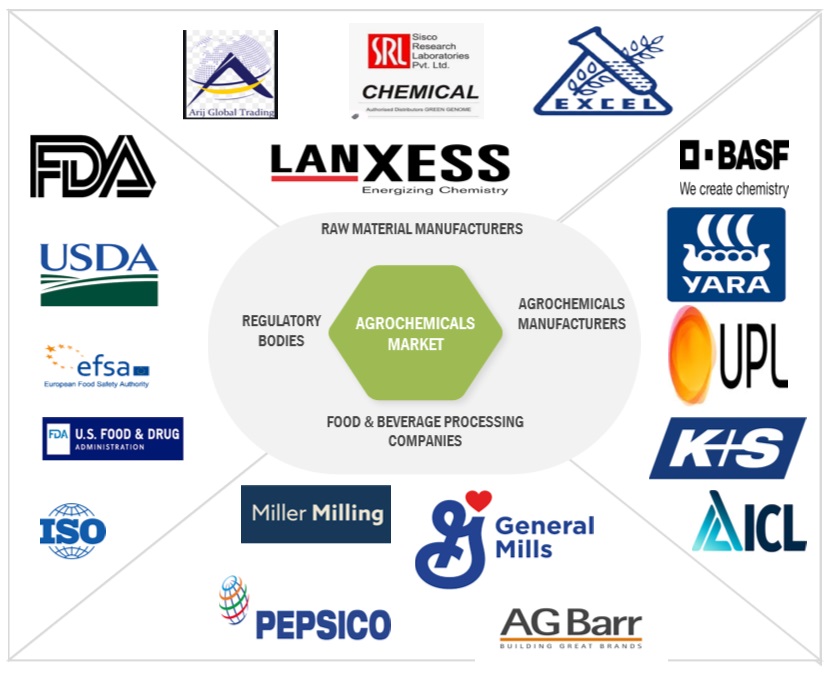The agrochemicals market is witnessing steady growth, driven by rising food demand, evolving farming practices, and supportive government regulations. According to a recent report, the market was valued at USD 235.2 billion in 2023 and is projected to reach USD 282.2 billion by 2028, growing at a CAGR of 3.7%.
Key Drivers Fueling Growth
Favorable Government Policies
Governments worldwide are pushing for sustainable farming through subsidies, labeling standards, and stricter regulations. For example:
- The US and Europe mandate strict labeling for specialty fertilizers to ensure quality and environmental compliance.
- China’s five-year agricultural plan has encouraged reduced pesticide and fertilizer use, promoting controlled-release fertilizers (CRFs).
- India has eased restrictions on fertilizer imports, supporting availability for farmers.
The European Green Deal is another landmark initiative, with the fertilizer industry aiming for near-zero carbon emissions in ammonia production, a key raw material.
Rising Demand for Crop Productivity
The global agrochemicals market is being shaped by rising populations and food demand. With agricultural trade expanding, new crop pests and diseases are emerging, increasing the need for innovative solutions to protect yields. This makes advanced agrochemical products crucial for sustainable food production.
Innovation in Agrochemical Products
Research and development investments are reshaping the industry. For instance:
- Wilbur-Ellis Co. launched DILIGENCE-EA, a deposition and drift reduction product, powered by ACCUSTRIKE technology.
- Precision Laboratories partnered with Monsanto to advance drift control agents for safer spraying.
These efforts highlight a positive agrochemical market outlook, with companies introducing technologies that improve efficiency while addressing environmental challenges.
Regional Insights
South America Leads with Strong Growth
South America is projected to hit USD 73.2 billion by 2028, with Brazil and Argentina driving growth as top soybean producers. Favorable trade policies, abundant arable land, and labor availability make the region a hotspot for adoption. Monitoring the agrochemical market size here is essential for understanding future opportunities.
Asia-Pacific Emerging as a Growth Engine
The Asia-Pacific region is increasingly adopting herbicides, fungicides, and bio-friendly crop protection methods to safeguard yields. Countries with strong food security initiatives are significantly boosting their agrochemical market share, supported by policy reforms and innovation.
Industry Perspective
For businesses and investors, the latest agrochemical market report emphasizes opportunities in precision farming, bio-based solutions, and digital agriculture tools. These trends reflect a future where efficiency and sustainability go hand in hand.
Meanwhile, innovation in farming inputs and favorable trade conditions continue to drive agrochemical market growth across regions, creating opportunities for global players to expand their footprint.
Outlook for the Agrochemicals Market
The market is moving toward sustainability with a dual focus: increasing food production while minimizing environmental impact. The rise of organic-friendly growth promoters, coupled with government support and industry innovation, is shaping the future of crop protection and fertilizer solutions.
Make an Inquiry to Address your Specific Business Needs
Key Questions Addressed by the Agrochemicals Market Report
Q1. What is the current size of the agrochemicals market?
The agrochemicals market size was valued at USD 235.2 billion in 2023. It is expected to reach USD 282.2 billion by 2028, growing at a CAGR of 3.7% due to rising food demand, technological advancements, and supportive government policies.
Q2. What factors are driving global agrochemicals market growth?
The global agrochemicals market is driven by increasing food demand, population growth, advancements in farming practices, and R&D investments in eco-friendly solutions. Policies promoting sustainable fertilizers and pest control are also fueling adoption worldwide.
Q3. Which regions dominate the agrochemicals industry?
South America and Asia-Pacific are emerging as high-growth regions. Brazil and Argentina are major contributors due to large-scale soybean production, while Asia-Pacific is witnessing rapid adoption of crop protection products to strengthen its agrochemical market share.
Q4. What does the agrochemical market outlook look like for the next five years?
The agrochemical market outlook points to steady growth, with emphasis on organic-friendly inputs, precision farming, and bio-based alternatives. Companies investing in sustainable solutions are expected to capture strong demand globally.
Q5. Who are the key players in the agrochemicals market?
According to the latest agrochemical market report, major players include Bayer AG (Germany), Syngenta (Switzerland), BASF (Germany), Corteva Agriscience (US), and FMC Corporation (US). These companies are expanding portfolios to meet both productivity and sustainability goals.
Q6. What are the growth opportunities in the agrochemicals industry?
Significant agrochemical market growth opportunities lie in eco-friendly fertilizers, drift-reduction products, and digital farming solutions. Rising demand for sustainable agriculture in emerging economies is expected to accelerate adoption in the coming years.

